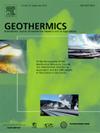Influence of thermal and cooling cycles on the mechanical properties of building stones with carbonate texture
IF 3.5
2区 工程技术
Q3 ENERGY & FUELS
引用次数: 0
Abstract
Rocks are frequently subjected to environmental stress, with one of the most prevalent being heating and cooling cycles. Rocks with calcareous origin, in particular, show significant responses to fluctuations in temperature. This study investigates the mechanical characteristics of two types of carbonate rocks, travertine and marble, under various temperature conditions (+300 °C, +100 °C, ambient temperature, -10 °C, and -30 °C). Key property assessed include uniaxial compressive strength, three-point bending strength, Brazilian tensile strength, and pressure wave velocity. These tests were conducted across different thermal cycles (one and three) to observe the effects of repeated temperature fluctuations. Advanced analytical techniques such as X-ray diffraction (XRD), X-ray fluorescence (XRF), scanning electron microscopy (SEM), and CT scans were employed. Additionally, image processing techniques were used to detect and quantify cracks, analyze crack areas, and measure strain in each particle of the samples. The results demonstrated that tensile and flexural strength decreased with rising temperatures and increased as temperatures fell. However, after exposure to +100 °C, the compressive strength of travertine nearly doubled, while in marble, it increased by 1.3 times. Following exposure to +300 °C and the repetition of heating-cooling cycles, the compressive strength declined compared to the +100 °C condition. Analysis using XRD, XRF, SEM, and CT-Scan revealed significant effects from the presence of calcite, moisture within the sample, and the formation of microcracks on the mechanical properties. Travertine, with its sedimentary and porous texture, exhibited a greater response to these changes than marble.

冷热循环对碳酸盐结构建筑石材力学性能的影响
岩石经常受到环境压力,其中最普遍的是加热和冷却循环。特别是钙质岩石,对温度的波动有显著的反应。本研究研究了石灰华和大理石两种碳酸盐岩在不同温度条件下(+300℃、+100℃、环境温度、-10℃和-30℃)的力学特性。评估的关键性能包括单轴抗压强度、三点弯曲强度、巴西抗拉强度和压力波速度。这些测试是在不同的热循环(一个和三个)中进行的,以观察反复温度波动的影响。采用了先进的分析技术,如x射线衍射(XRD)、x射线荧光(XRF)、扫描电子显微镜(SEM)和CT扫描。此外,图像处理技术用于检测和量化裂纹,分析裂纹区域,并测量样品中每个颗粒的应变。结果表明,拉伸和弯曲强度随温度升高而降低,随温度下降而升高。然而,在+100℃下,石灰华的抗压强度几乎增加了一倍,而在大理石中,它增加了1.3倍。暴露于+300°C和反复加热-冷却循环后,与+100°C条件相比,抗压强度下降。通过XRD, XRF, SEM和ct扫描分析,发现方解石的存在,样品中的水分以及微裂纹的形成对力学性能有显著影响。石灰华具有沉积和多孔的结构,对这些变化的反应比大理石更大。
本文章由计算机程序翻译,如有差异,请以英文原文为准。
求助全文
约1分钟内获得全文
求助全文
来源期刊

Geothermics
工程技术-地球科学综合
CiteScore
7.70
自引率
15.40%
发文量
237
审稿时长
4.5 months
期刊介绍:
Geothermics is an international journal devoted to the research and development of geothermal energy. The International Board of Editors of Geothermics, which comprises specialists in the various aspects of geothermal resources, exploration and development, guarantees the balanced, comprehensive view of scientific and technological developments in this promising energy field.
It promulgates the state of the art and science of geothermal energy, its exploration and exploitation through a regular exchange of information from all parts of the world. The journal publishes articles dealing with the theory, exploration techniques and all aspects of the utilization of geothermal resources. Geothermics serves as the scientific house, or exchange medium, through which the growing community of geothermal specialists can provide and receive information.
 求助内容:
求助内容: 应助结果提醒方式:
应助结果提醒方式:


